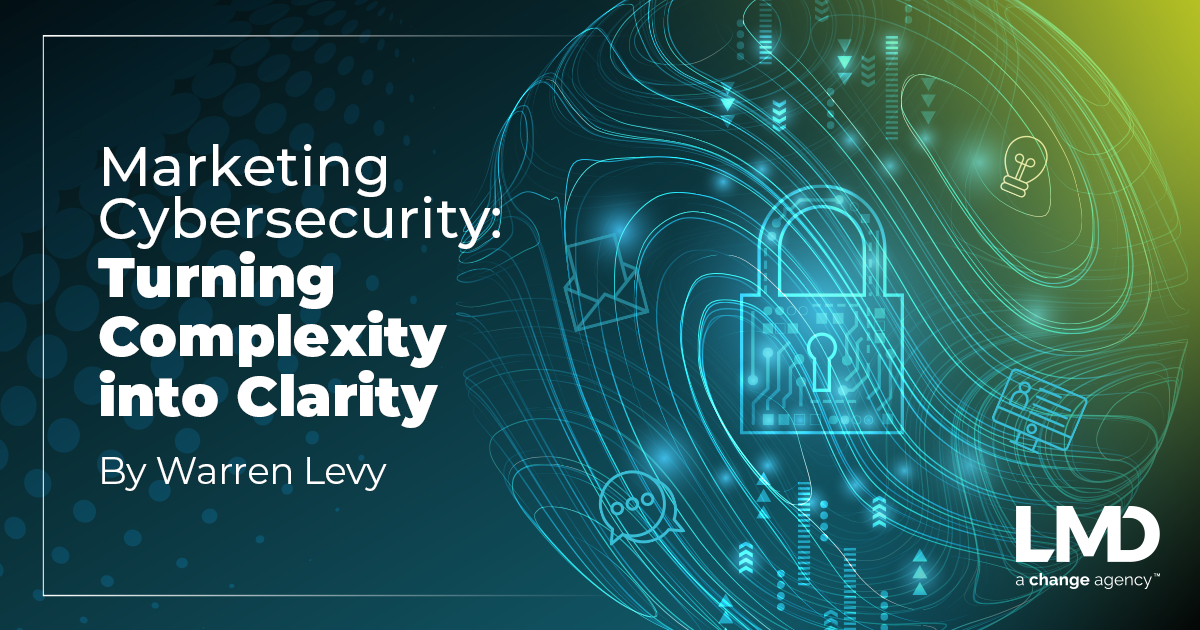Marketing Cybersecurity: Turning Complexity into Clarity
In today’s digital world, cybersecurity isn’t just a concern for IT departments; it also requires individuals, small business owners, and global corporations to safeguard information and systems from identity theft, financial fraud, or compromising national security. Creating marketing messages that connect with diverse audiences that range in tech savviness from novice to expert can be as challenging as understanding malware, phishing, firewalls, or encryption.
The goal of marketing cybersecurity relies on decoding complex technologies into understandable information while instilling a sense of urgency and empowerment. Here are some effective strategies for connecting the foundations of cybersecurity to a broad and diverse audience:
Simplify the message. Cybersecurity concepts–like multi-factor authentication, zero trust architecture, and end-to-end encryption–can be intimidating. The key to effective marketing is translating these technical terms into relatable language. Focus on the benefits, not the mechanics. Instead of explaining how an intrusion detection system works, highlight how it can protect systems from security threats and users’ personal files (such as family photos).
Use real-world stories. Nothing communicates urgency like a relatable scenario. Stories humanize the issue and create emotional connections that technical aspects can't. Share stories of data breaches, phishing attacks, and ransomware incidents that have affected everyday people and well-known companies. Highlight both consequences and solutions.
Educate through content. Educational content builds trust and positions you as a thought leader. Blogs, webinars, short videos, and infographics that explain “how to protect your online identity” or “what to do after a data breach” are powerful tools. When people understand the risks and the remedies, they’re more likely to act.
Segment your audience. Not everyone has the same cybersecurity concerns. An individual or a family requires different protections than a small business or a large enterprise. Tailor your messaging accordingly. For individuals and families, focus on personal safety and convenience. For businesses, stress regulatory compliance, reputation protection, and financial risk reduction.
Leverage influencers and advocates. Partnering with trusted voices such as cybersecurity experts, tech influencers, or lifestyle bloggers can expand your reach. Influencers are perceived as trusted, and their recommendation or advice about staying safe online can increase the credibility of your message.
Highlight trust and transparency. Transparency and honesty inspire trust. Avoid fear-based tactics; instead, empower your audience with knowledge and solutions. A calm, confident tone reassures your target audience and builds belief in your message.
Marketing cybersecurity effectively is about blending simplicity, comprehension, and empowerment. By creating messaging that’s clear, relatable, and actionable, you turn a complex challenge into an opportunity for engagement and impact.
Need a partner to create your next cybersecurity campaign? Contact LMD.


